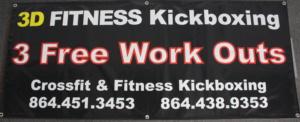 Banners, banners, banners! They are everywhere these days. And they are often beautiful while fluttering in the wind, drawing the eye towards some feature or event or location. These are among the most popular and inexpensive ways to advertise or promote something.
Banners, banners, banners! They are everywhere these days. And they are often beautiful while fluttering in the wind, drawing the eye towards some feature or event or location. These are among the most popular and inexpensive ways to advertise or promote something.
If you have not used a banner before, here are a few points about how to care for banners.
When installing a banner, be certain that it is securely anchored, especially if used outdoors. You won’t want it to disappear in a strong gust of wind or fly into something or someone and cause harm. When affixed between two structures, be aware that wind force can be very strong and exert considerable force. You must be certain that the structure to which you have attached the banner can take the load and won’t come down or get damaged. When attaching the banner, it should be taut but not so tight there is no sag to it. A bit of slight sagging is inevitable.
Wind holes may be necessary depending upon the location, or you can choose to go with a mesh banner that is designed for fairly constant wind. The mesh styles usually have less definition than other cloth or vinyl type banners, but they are built for frequent and stronger breezes. Wind holes in vinyl or other cloth styles must be carefully and judiciously cut to allow the wind to flow through, but even those will rip if the location chosen is so windy and the wind is so forceful that it degrades the material quickly.
Periodic cleaning of the banner will help to extend the life of the banner and keep it looking great. Use water and a mild detergent and avoid harsh solvents. Some cloth banners can be cleaned using a gentle cycle in a regular washing machine.
Always roll the banner for storage when it is vinyl in particular. It should not be folded. The best method is to roll the banner around a tube that is about 4” or better in diameter. If the banner is lettered with vinyl graphics, one should then roll it with a sheet of paper across the face in order to prevent any adhesive that may be along the edge of the letters from adhering to any fabric that it touches. It is also better to roll the banners with the graphics facing outward.
Be realistic in your expectations of a banner. When the banner is outside, it is subject to nature’s demands. It should not be considered a substitute for a permanent sign which is manufactured on a more rugged material such as plywood, metal laminate or metal. But let your flags fly. Let the colors waft in the breeze and enjoy the spectacle.
Flags blowing on a sunny and clear day offer a great visual and unique promotion of your product or service or event.
